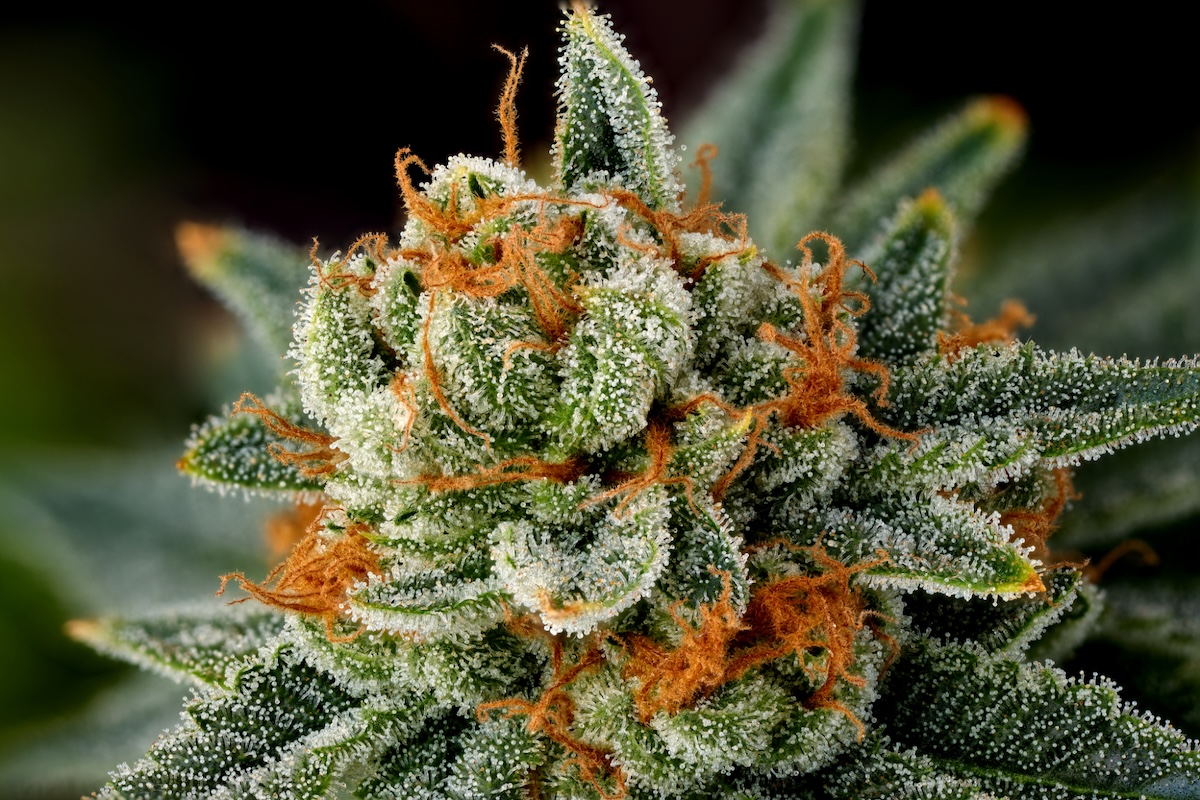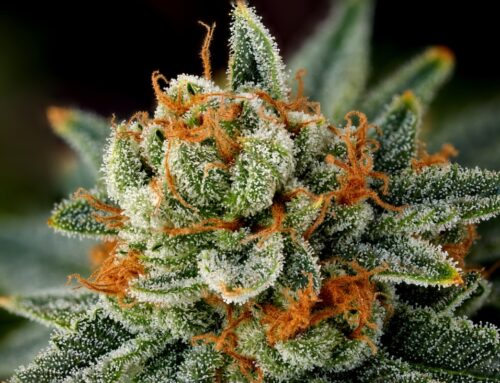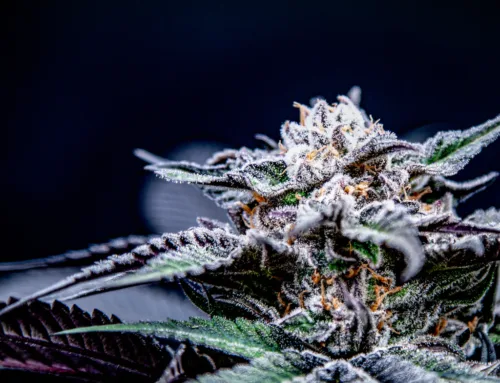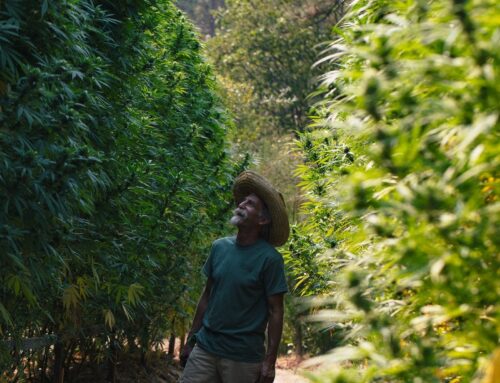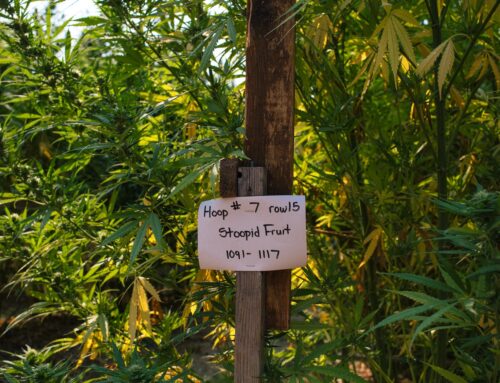We’re Living in a Cannabinoid World
Material girls had their moment.
We are now living in a cannabinoid world—especially us industry experts who’ve been working closely with the plant and learning about its many compounds for years.
Cannabinoids are just that: the plant’s chemical bread and butter, known for producing the popularized effects of cannabis like insomnia relief, reduced neuropathic pain, fortified immune system, quelled anxiety, and so much more.
Let’s explore what cannabinoids consist of, how they interact with the body, and why they’re so essential to pay attention to if you want to access the full range of anticipated therapeutic effects.
Does the human body produce cannabinoids?
Turns out you’re not so different from a cannabis plant after all.
That’s right: every human body contains its own endocannabinoid system (ECS), a vast network of signals and receptors found throughout our anatomy. The system is made up of pathways and endogenous cannabinoids—just like the ones produced by everyone’s favorite plant. But human cannabinoids essentially regulate how cells talk to each other within the body, and how those conversations are being processed.
Serving as a neuroregulatory moderator, the endocannabinoid system speaks to all of the body’s most essential functions—particularly appetite, immunity, memory, metabolism, movement, pain, and salivation.
Sound familiar?
Cannabinoid production in cannabis plants
Cannabis’s cannabinoids are just as plentiful as the human body’s endocannabinoid system’s—and just as naturally occurring. Incidentally, they also seem to have positive effects on most of the functions the body’s system is directly involved with, which is why learning more about the ECS can help you understand why cannabis is so potentially beneficial.
When it comes to plants, the cannabinoids are largely produced in the flower, but they can also be found in the leaves and stems, depending on the strain. There are over 100 recognized cannabinoids in cannabis plants, and likely more still waiting to be discovered by experts.
6 cannabinoid subclasses
There are six different cannabinoid types to be aware of, with plenty of variations living under each umbrella. While there are hundreds to learn about, they all stem from these main parent compounds.
The six types of cannabinoids include:
Tetrahydrocannabinols (THCs)
The most commonly recognized class of cannabinoids is THC: the one most responsible for cannabis’s well known and sought after “high.”
Cannabigerols (CBGs)
Known as the “mother cannabinoid,” cannabigerol is responsible for the derivatives of THC, CBD, and CBC. CBGs are non-psychoactive and incredibly rare.
Cannabinols (CBNs)
Cannabinols are old but good—at least depending on your needs. Derived from THC that has been long-decarboxylated, CBNs are also non-psychoactive, but known for helping consumers achieve a good night’s sleep.
Cannabidiols (CBDs)
You’ve certainly heard of CBD: THC’s less cool, but equally well known cousin that is non-psychoactive, but highly effective against ailments like anxiety, pain, insomnia, and epilepsy.
Cannabichromenes (CBCs)
Also non-psychoactive, research suggests that CBCs are good for pain reduction and anti-inflammatory effects.
Major cannabinoids in cannabis
Mastering the knowledge of the attributes of over 100 cannabinoids sounds like an impossible feat. So let’s not, say we did, and focus that energy on the plant’s major cannabinoids—a.k.a., the ones we tend to see most often in our products of choice.
THC
Most people know a thing or two about THC: the cannabinoid that most blatantly gets you “high.”
It’s also the most abundant cannabinoid found in the plant, and is often utilized medically to treat ailments like chronic pain, loss of appetite, PTSD, and more. THC is equally popular among recreational consumers, who enjoy it for its psychoactive effects.
Keep in mind: each of the plant’s cannabinoids will interact with your body’s ECS differently. For THC, that looks like a firm bind to cell types CB1 and CB2 receptors—particularly those CB1s, which regulate memory processing, motor control, and, of course, psychoactive properties.
THC is currently federally illegal, with a few loopholes. Delta-9 THC is the cannabinoid we’re most familiar with, but a newer, synthetic version known as Delta-8 THC has a much lower content, which aligns with the FDA’s required > 0.3 percent THC and is more widely available as a result. However, it remains up to the states whether or not they want to permit the sale of this compound.
Cannabis strains notably high in THC are Godfather OG, Gorilla Glue, and Blue Dream.
THCA
A main constituent of THC, tetrahydrocannabinolic acid (THCA) turns into its psychoactive, non-acidic counterpart when it’s burned or heated. Because it doesn’t bind to the ECS’s CB1 receptor, this pre-decarbed version of THC is non-psychedelic. It’s also recognized for being anti-inflammatory, antispasmodic, and effective against nausea and vomiting.
Since cannabis typically is activated (or “decarboxylated”) before it’s sold and consumed, THCA is somewhat difficult to find. You’ll have the most luck with a freshly-made extract; worst-case scenario, you can consume it raw for a rough, harsh-tasting, THCA-packed experience.
Strains notably high in THCA are Northern Lights, Gorilla Breath, Green Crack, and Sour Mac.
CBD
Cannabidiol (CBD) is just as popular as THC, but its effects are pretty different. The cannabinoid is non-psychoactive, and largely used to treat symptoms like anxiety, insomnia, arthritis, inflammation, and epilepsy.
Since it’s federally legal, CBD is the most widely available cannabinoid on the market, and it’s showing up in an increasing number of products. From oils and tinctures to skincare and infused smoothies, this cannabinoid has successfully found its place in the wellness community, and plays a role in the overall reduction of the plant’s long-term and undeserved stigma.
CBD is most often found in strains like ACDC, Harlequin, and Sour Tsunami—heady sativa dominants that are relatively low in THC and powerful against pain and inflammation.
CBDA
Cannabidiolic acid (CBDA) is to CBD what THCA is to THC: the acidic precursor to the activated version of the non-psychoactive cannabinoid. It’s best-known for its anti-inflammatory effects, and is most abundant in the seedless female flower’s glandular trichomes and buds.
The cannabinoid is largely overlooked and under-researched, but is present in high quantities in fiber and seed-oil hemp and has a lot of potential as an immune cell booster. Cannabis strains with high amounts of CBDA include Cannatonic, Ringo’s Gift, Pennywise, and Charlotte’s Web.
CBN
Cannabinol (CBN) has spent much of its life in the shadows, but it’s been enjoying some recent spotlighting from the cannabis community as consumers become more aware of its availability and efficacy.
A mildly-psychoactive result of the degradation of THC over time, CBN is rarely found in newborn plants. Instead, it appears after THC has been exposed to heat and light, which is why it’s more commonly found in aged plants. It can also be produced synthetically.
CBN is recognized for its sedative, couch lock effects, which is why it’s great for insomnia or anyone trying to get a good night’s sleep. Strains high in CBN include Animal Cookie, Super Green Crack, Banana OG, and Purple Cadillac.
CBG
Cannabigerol (CBG) is known for being non-psychoactive, antibacterial, anti-inflammatory, and anti-cancer. It’s also recognized for its potential to promote bone growth, and although it’s still a rare cannabinoid among consumers, it’s beginning to increase in popularity.
Cannabis strains Jack Frost, Super Glue, Lemon Diesel, and Goliath are all high in CBG.
CBC
Cannabichromene (CBC) is commonly found in tropical cannabis varieties, like Maui Dream or Blue Cherry Soda. A lot of research still needs to be done on this cannabinoid, but it’s mainly recognized for relieving pain, reducing inflammation and inhibiting tumor/cancer cell growth.
THCV
Tetrahydrocannabivarin (THCV) is a fly-under-the-radar cannabinoid, found in very few cannabis strains (Doug’s Varin, Durban Poison, and Willie Nelson, to name a few).
Although it sounds similar to THC, it isn’t. Instead of promoting potent psychoactive effects that boost creativity and stimulate appetite, THCV suppresses hunger, decreases panic attacks, and, similarly to CBG, might promote bone growth.
CBDV
Similar to THCV, cannabidivarin (CBDV) is dissimilar to CBD. However, it is increasingly recognized for managing epilepsy, so maybe it’s not so strange after all. Strains high in CBDV include Euphoria, CBDV Auto, and Royal CBDV.
How cannabinoids affect us
Cannabinoids have a wide array of potential effects and benefits, but how do they do all of the wonderful things they do?
Cannabinoids’ effects are a result of a receptor-type bind: particularly the cannabinoid receptor type 1 (CB1) and the cannabinoid receptor type 2 (CB2). Each cannabinoid has a different relationship with each receptor, but in general, a CB1 bind will result in more psychotropic effects, while a CB2 bind serves more important roles in immunity boosting and in lessening inflammation.
Once the cannabinoids have bonded with their respective receptors—or some winning combination of the two—they’re able to directly affect how our cells communicate, just like our ECS does for us to begin with. This is where we begin to experience the desired benefits we turn to cannabis for in the first place: ideally boosted function that allows us to smile easier, relieve ailments, and generally improve how we enjoy our lives.
CB1 vs CB2 receptors
The simplest way to differentiate between CB1 and CB2 receptors: 1 for the brain, and 2 for the body.
While the CB1 receptor works closely with THC to ensure your mind is expanded and ready for new ideas and perspectives, CB2 delivers cannabis’s benefits directly to your body, working to relieve pain, increase appetite, or ease inflammation.
However, although responsible for different functions, cannabis’s relationship with each receptor works hand in hand to promote overall health and wellness. A link between our minds and bodies is built into our anatomy, which means whatever affects the brain will result in an accompanying reaction in the body, and vice versa.
However, if one of your functions is in greater need of attention, you should focus on cannabis strains and products that work closest with the receptor responsible for your area of need.



